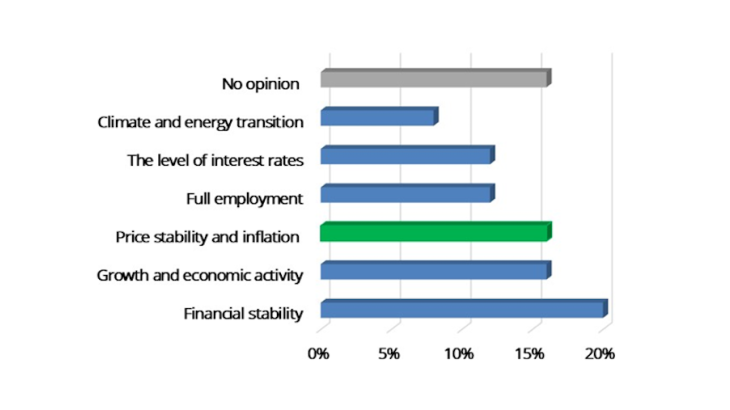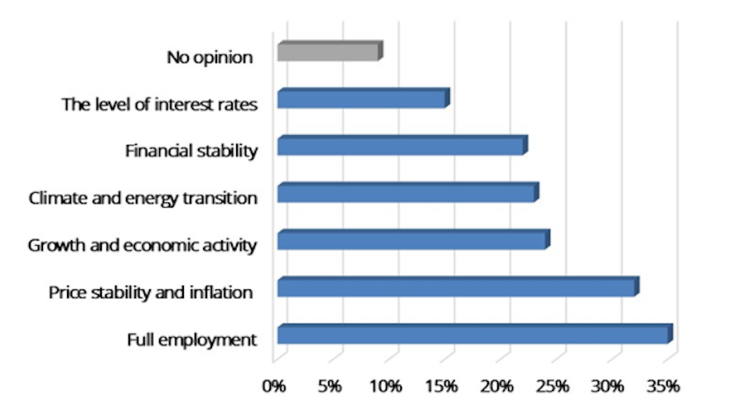History and economics of the primary objective of price stability
The political economy literature initiated by Kydland and Prescott (1977) and Barro and Gordon (1983) introduced a rigorous framework for examining the role of policymakers in macroeconomic stabilisation. One lesson that emerged was that, in order to enforce a low inflation equilibrium, monetary policy must be delegated to a credible and independent – of political pressures – institution. Indeed, historical episodes worldwide show a clear “inflationary bias” of governments in the absence of an independent authority in charge of price stability (e.g. Germany in the early 1920s and several European countries in the 1970s and 1980s).
As a result, the ECB was given a clear primary objective of price stability, set by the Treaty on the Functioning of the European Union (TFEU - hereinafter "the Treaty" -, Article 127). The quantitative definition of price stability has evolved over time and, since July 2021, it is defined as a 2% symmetric inflation target over the medium term. In addition, the principle of prohibition of monetary financing (TFEU, Article 123), together with the principle of central bank independence (TFEU, Article 130), was established to avoid any political pressure from euro area Member States on the Eurosystem. Finally, the ECB has been assigned the best instruments to control inflation, such as the setting of key interest rates.
A secondary objective without prejudice to the first
Despite the primacy of price stability, the ECB’s legal mandate is not a single one, but rather a “hierarchical” mandate that includes a “secondary” objective. Indeed, Article 127 of the Treaty states that, without prejudice to price stability, the ECB “shall support the general economic policies in the Union with a view to contributing to the achievement of the objectives of the Union”. Among the latter: “full employment”, “balanced economic growth”, “high level of protection and improvement of the quality of the environment”. Moreover, Article 127(5) provides that the ECB shall contribute to the "stability of the financial system".
Besides the requirement that it uses only the instruments provided for in the Treaty, the main conditions for the ECB to pursue the secondary objective are:
- The ECB’s support for other economic policies must not be detrimental to price stability.
- The ECB is not allowed to conduct “economic policies”, it has only a supportive role in them, as governments and parliaments have the primary responsibility for them.
- Any ECB action must not go beyond what is necessary to achieve it nor have negative consequences that would outweigh the positive expected results (proportionality test).
Opportunities and challenges of the new monetary policy toolkit
In the era of "conventional" monetary policy, the ECB's single-objective, single-instrument set-up made it more difficult to intentionally take account of considerations other than price stability into monetary policy decisions. Nevertheless, de facto, the ECB has always also considered a measure of activity (e.g. the output or the unemployment gap) when setting policy rates, in line with the prescriptions of a Taylor rule. In fact, trade-offs between activity and price stabilisation do not appear in the case of aggregate demand shocks. In the case of supply shocks, conversely, when such trade-offs might materialise, the “medium-term” orientation of the ECB’s objective allows it to “look through” the shock and respond only in the presence of second-round effects (e.g. on wages).
However, the gradual expansion of the ECB’s toolkit, which now includes “new conventional” instruments, such as asset purchases, offers wider possibilities of support, which have to be assessed so as to identify the most relevant and efficient solutions.
The interactions between price stability and the secondary objective
Much work has been done during the 2020-21 strategy review to study the role of other considerations, related to the secondary objective, for the conduct of monetary policy, such as employment, financial stability, and climate change. On the legal side, the review has led to a broad overview of the ECB’s mandate, available here, while the specific issue of the links between climate change and the mandate had been explored in previous works (see here, chapter 7).
The new ECB strategy clearly reiterates that “a medium-term orientation allows the Governing Council to cater in its monetary policy decisions for other considerations relevant to the pursuit of price stability” and specifies that “taking such considerations into account will often be necessary to maintain price stability over the medium term”.
In particular, it has become increasingly clear over recent years that climate change has consequences for the price stability objective through its impact on macroeconomic indicators such as inflation, output, employment or productivity. Besides, climate change has and will increasingly have severe consequences on many objectives of the Union, such as the well-being of its peoples, a balanced economic growth and the environment. Climate change is therefore also linked to the ECB’s secondary objective.
Consequently, as a part of the new strategy, the ECB has formulated a promising action plan regarding climate change, which includes possible refinements of monetary policy tools, such as asset purchases. The ECB’s preventive role, i.e. an action against climate change itself, is however bounded by the above-mentioned legal conditions. It must hence only be understood as being a complementary role alongside the main public players in the fight against climate change, who belong to the legislative and executive spheres.

